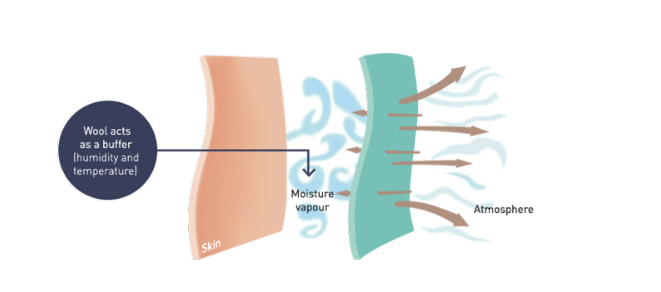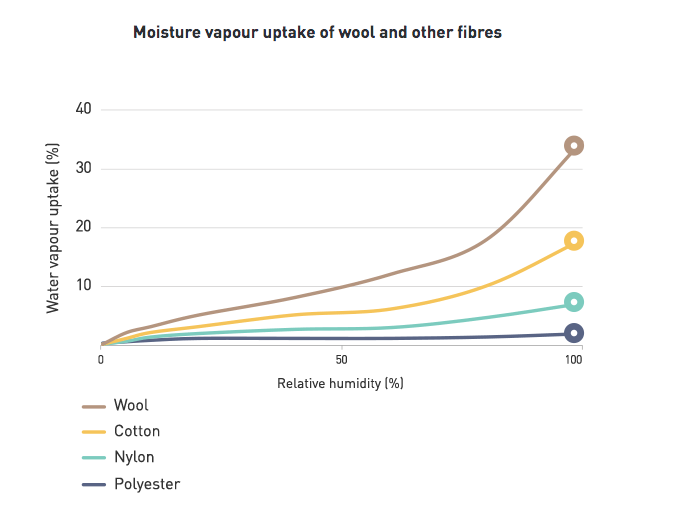2024 and still the misconception about the fibre wool!
- Curly Banana
- Apr 5, 2024
- 3 min read

Wool is a natural fibre produced by sheep, which has been used by humans for a wide variety of purposes and products. It is easier to understand the processing of wool and the performance of the subsequent products if you understand the behaviour of the wool fibre from the outset.
This course takes an in-depth look at the wool fibre, its structure, chemistry and physics. It also explores the implications of the structure, physics and chemistry of the wool fibre in terms of the properties and benefits of wool products.
“Wool is good for the skin- And does not have to be uncomfortable to wear.”
Recently published research has demonstrated that wearing superfine Merino wool next to the skin is beneficial for eczema sufferers. This adds to a growing number of research findings supporting the wellbeing benefits of superfine Merino wool.
The research has shown that wearing superfine Merino wool significantly improves the severity and symptoms of this chronic skin condition, challenging misconceptions that all wool is prickly and itchy.
What is eczema?
Many of us have broken out in a rash at least once in our lives – heat rash, stress rash, or some other nasty. But spare a thought for those who suffer from constant breakouts, or for babies too young to understand what this intense itchy, dry skin is. Eczema, also known as Atopic Dermatitis (AD), now affects up to 28% of children. Its prevalence varies geographically and is increasing in many countries. Eczema sufferers have dysfunctional skin that dries out, which can lead to cracked skin, bacterial infection, redness, scratching and itching.
Eczema treatments
The most common treatments currently include the regular application of non-cosmetic moisturisers and topical steroids to reduce inflammation, as well as antibiotics to address bacterial infection. However, in a major medical breakthrough, wool has been found to be beneficial to the skin, providing a natural adjunct treatment for eczema that reduces the need for traditional medicines. Dermatologial trials have shown that adult and infant eczema sufferers who wear superfine Merino wool garments – of 17.5 microns or less – next to the skin have significantly reduced symptoms.
How wool benefits eczema patients
Whether it’s hot, cold, humid or dry, Merino wool garments are the most breathable of the common apparel types because of wool’s ability to absorb and release twice as much moisture vapour as cotton, and 30 times as much as polyester. When worn next to the skin, super fine Merino wool works as a dynamic buffer, helping to stabilise the humidity levels and temperature of the micro-climate between the fabric and the skin. It appears super fine Merino wool acts like a second skin for people whose ‘first’ skin is too dry.
Wool works to buffer the dynamic micro-climate between the fabric and the skin

Eczema sufferers have especially sensitive skin and an Australian study at the Murdoch Children’s Research Institute has shown that wool garments made from soft superfine Merino wool garments were well tolerated by participants in the study and reduced their eczema symptoms. Note: the garments must have a mean fibre diameter of 17.5 micron or finer. The below graph demonstrates how wool is one of the best of the common apparel fibres.

The evidence: studies show a reduction in eczema symptoms with wool
Four recent dermatology trials have shown that infant, adolescent and adult eczema sufferers have reported reduced symptoms when wearing superfine Merino wool garments next to the skin. They have shown benefits of wearing superfine Merino wool garments with a mean fibre diameter ≤17.5 mm for at least 6 hours/day for 6 weeks on the severity and symptoms of Atopic Dermatitis.Across the four studies, wearing superfine Merino wool base-layer garments was associated with significant improvements in SCORAD, EASI and ADSI scores. Furthermore, patients reported significant reductions in symptoms of itchy, scratchy and painful skin and that bleeding, weeping/oozing, flaking and dry or rough skin decreased.These benefits on symptoms translated into significant improvements in quality of life in both children and adults, reported using the IDQOL and DLQI, respectively.
Source: @TheWoolmarkCompany